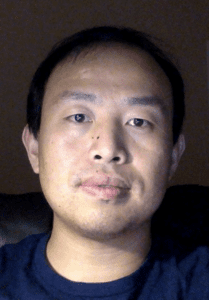Posted By: Kylee Spencer, PhD, Assistant Editor, AJHG
Each month, the editors of The American Journal of Human Genetics interview an author of a recently published paper. This month we check in with William (@wenxqwen) to discuss his recent paper “Integrating transcriptomics, metabolomics, and GWAS helps reveal molecular mechanisms for metabolite levels and disease risk”.

KS: What motivated you to start working on this project?
WW: This project is motivated by our long-term interest in understanding the molecular mechanisms of complex diseases using genetic data. In the past few years, we have witnessed many successes in gaining biological insights by combining molecular QTLs and large-scale GWASs. But most existing studies utilize a single type of molecular phenotype (e.g., transcriptome abundance). We are curious about the added potential of incorporating multiple types of molecular phenotypes.
The METSIM metabolomics study (led by Drs. Markku Laakso and Michael Boehnke) makes this project a reality. Together with the availability of the multi-tissue eQTL data from the GTEx project and the GWAS data from the FinnGen study, we are able to leverage the high-quality, multi-type genetic association data to investigate the links between genetic variants, molecular phenotypes (i.e., transcription abundance and blood metabolite levels), and complex diseases.
More specifically, we set out to answer the following three questions:
- To what extent is the genetic basis shared between gene expression and metabolite levels?
- Does integrating two types of molecular phenotype data (i.e., metabolomics and transcriptomics) with disease GWASs explain gene-disease associations that were not understood in studies utilizing only a single kind of molecular phenotype data?
- Does integrating transcriptomics and metabolomics data simultaneously with disease GWASs identify disease molecular mechanisms that were not identified in studies utilizing a single type of omics data?
We are pleased that our project provides some definitive answers to these questions.
KS: What about this paper/project most excites you?
WW: Many aspects of this project excite me. Besides the scientific questions we address in this project, I am most excited that many sophisticated computational methods that we, as a community, built over the last decade have come to fruition. These computational methods are instrumental to our project. They enable us to address our challenging scientific questions quantitatively and rigorously.
I am equally excited about working with a team of world-class scientists with diverse expertise. I am extremely grateful to the lead author of the paper, Dr. Xianyong Yin, who did most of the heavy lifting.
KS: Thinking about the bigger picture, what implications do you see from this work for the larger human genetics community?
WW: Our work serves as proof of the principle that multiple types of molecular phenotypes can complement each other for improved power to identify the mechanisms of complex diseases. We hope our results motivate more high-quality genetic studies of diverse molecular phenotypes, which will become invaluable resources to further the systematic exploration of molecular mechanisms of complex diseases. We also see a great need for novel, rigorous, and interpretable computational approaches to integrate genetic data from diverse molecular and complex trait data.
KS: What advice do you have for trainees/young scientists?
WW: Looking back, I benefited greatly by learning from mentors and fellow trainees with diverse training backgrounds (e.g., statistics, genetics, computer science). As our field becomes increasingly multi-disciplinary, it is important to keep an open mind and be willing to communicate with scientists with different domain expertise. To do so may require us to engage in conversations outside our comfort zone of knowledge and start asking very basic questions. The benefit is far greater: we can always deepen our own understanding by learning from different thought processes and scientific perspectives.
KS: And for fun, tell us something about your life outside of the lab.
WW: I live happily in Ann Arbor, Michigan. I love reading about the history of science and playing soccer with my kids when I am not working.
